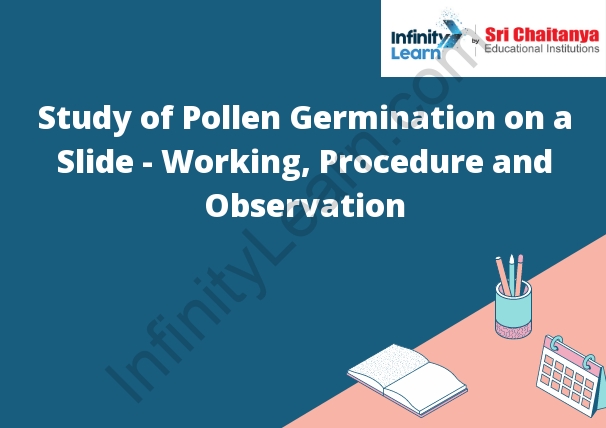Table of Contents
Study of Pollen Germination on a Slide
The study of pollen germination on a slide is a technique used to determine the viability of pollen. Pollen viability is the ability of the pollen to germinate and produce a functional embryo. This technique can be used to determine the fertility of a plant or the quality of its pollen.
To study pollen germination on a slide, a sample of pollen is collected and placed on a slide. The slide is then placed in a humid chamber and allowed to incubate. The pollen will germinate and the resulting embryos will be visible under a microscope. The number of embryos and the viability of the pollen can then be determined.

Study of Pollen Germination on a Slide – Working
A pollen grain is a male reproductive cell that is borne in the anthers of a flower. Pollen grains are tiny, and are often too small to be seen without magnification. Pollen germination is the process by which a pollen grain becomes a functional male cell.
Pollen grains are generally round or oval in shape, and have a tough outer coat called the exine. The exine is made up of a number of different substances, including proteins, lipids, and minerals. The exine protects the pollen grain from drying out, and also from predators and pathogens.
The interior of a pollen grain contains a haploid nucleus, two sperm cells, and a tube cell. The haploid nucleus contains the genetic information that will be used to create the new plant. The sperm cells are used to fertilize the egg cell in the ovule of the flower, and the tube cell helps to transport the sperm to the egg.
Pollen germination begins when the pollen grain comes into contact with water. The water causes the pollen grain to swell, and the exine cracks open. The haploid nucleus and the sperm cells are then released from the grain.
The sperm cells swim to the egg cell, and the nucleus of the sperm cell fuses with the nucleus of the egg cell. This process of fertilization results in the creation of a new plant.
Procedure and Observation
A pollen slide is made by mixing a small amount of pollen with a drop of glycerin on a microscope slide. A coverslip is then placed over the pollen and the slide is inverted. The slide is then placed in a warm place and observed daily for germination.
Pollen germination is the process by which a pollen grain becomes a functional male gametophyte. The process begins with the pollen grain becoming hydrated. This begins the process of cell division. The pollen tube is then formed and the spermatozoid is released. The spermatozoid then swims to the female gametophyte and fertilizes the egg.
Pollen germination can be observed by looking for the formation of the pollen tube. The pollen tube is a long, thin structure that is formed from the pollen grain. The pollen tube is used to transport the spermatozoid to the female gametophyte. The pollen tube can be observed by looking for a long, thin structure that extends from the pollen grain.




